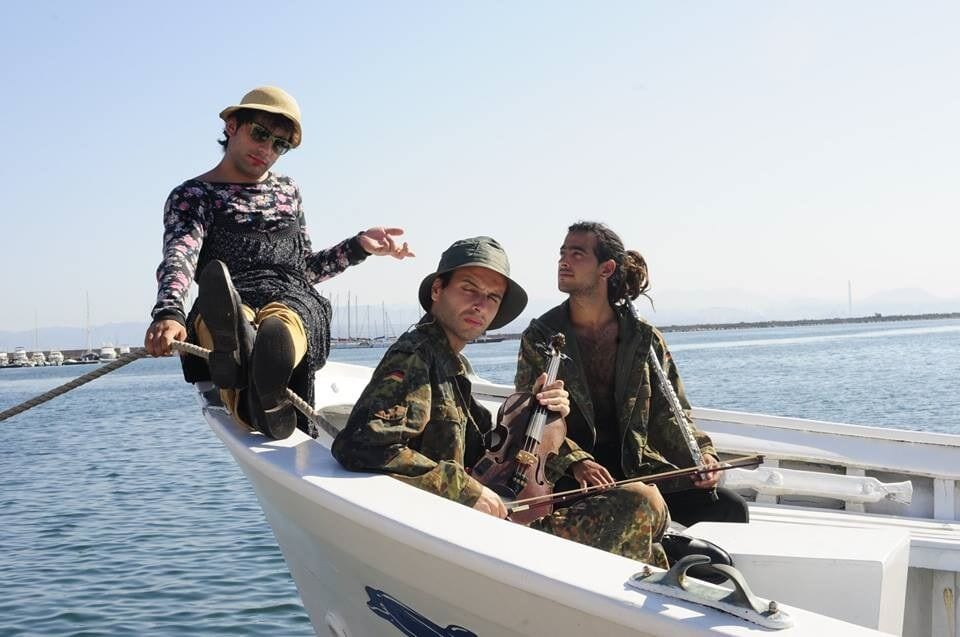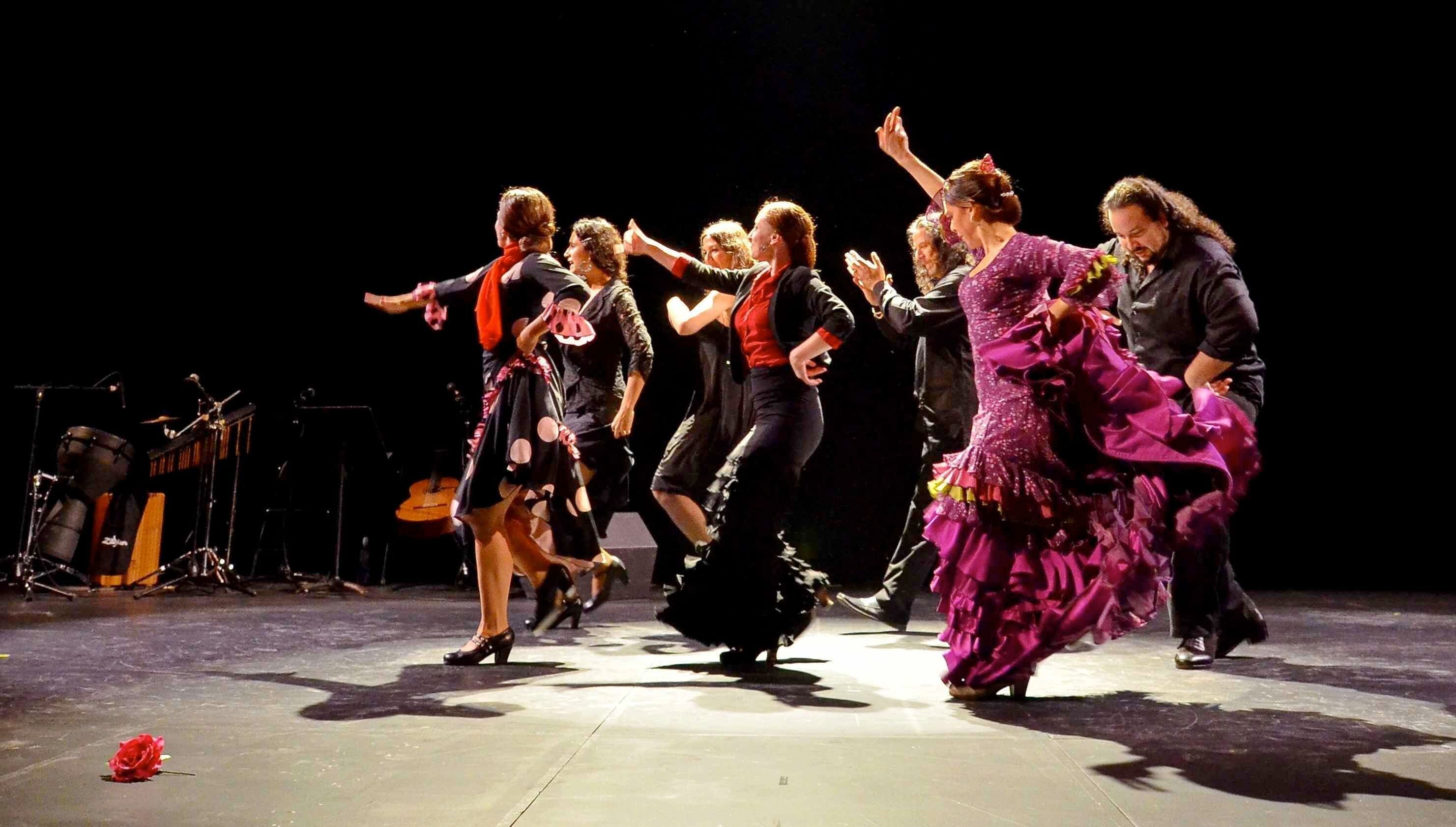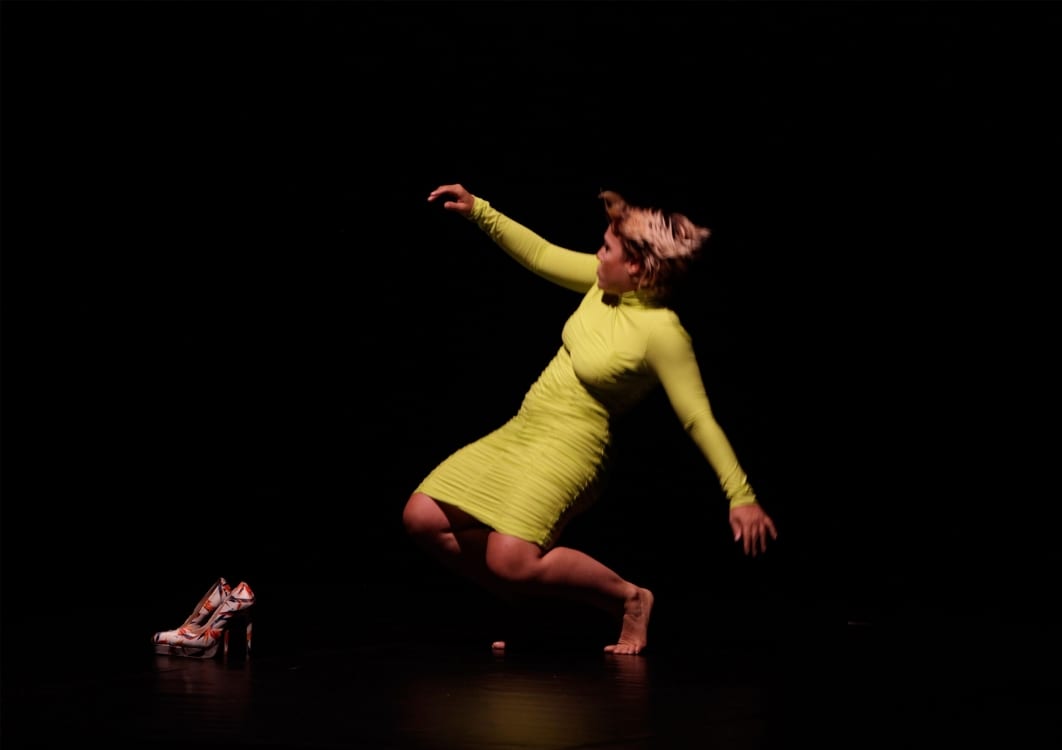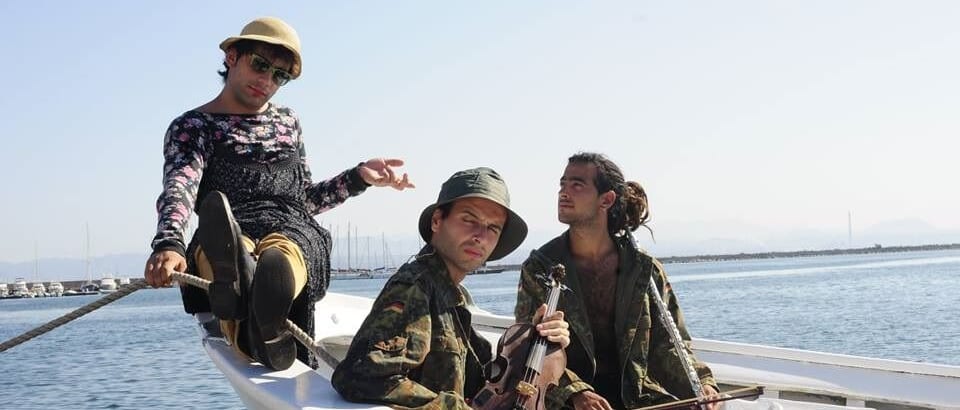In 2010, the Greek economy imploded and the authoritarian permafrost covering much of the Arabian Peninsula and North Africa thawed in a sweeping Arab Spring. At the same time, Aktina Stathaki (who’s Greek) found herself bristling at the stereotype-laden coverage of these events. This slanted coverage fit into a larger problem that Stathaki had identified: for all of the multicultural institutions in New York, there wasn’t a platform for Mediterranean artists to share their work and their unique perspective. She decided to organize a festival focused on showcasing work from early to mid-career Mediterranean performing artists. In 2011, the Between Seas Festival was born, becoming the only international festival dedicated to showcasing contemporary culture from the Mediterranean.
The 2019 iteration proves that, under Stathaki’s sage leadership, the Festival has developed into a vital platform for relatively unheard voices in New York City’s theater landscape. This year’s slate covers an impressive amount of ground: from intimate family drama in Sardegna, to a satiric exploration of an oft-forgotten Balkan conflict, to a Romanian writer’s journey from her home country under communism to New York in the immediate after of 9/11, to, finally, a documentary play chronicling sex-trafficking in Lebanon.
The Festival, then, is diverse, though Stathaki hopes to incorporate more North African voices in the future. When building a season, Stathaki looks for, besides geographic and cultural variety, artists with a profound connection to the city they work in. She’s not interested in people who spend all of their time on the festival circuit, but rather strives to bring work across the Atlantic that conveys a visceral sense of place. At the same time, she wants to promote artists and work that engages with matters of social and political importance. In 2019, she succeeds on both counts. Between the Seas impresses with its ability to offer breathtakingly beautiful and intimate peeks into the lives of people from a wide range of cultures, all without losing sight of pressing problems of global significance.
Perhaps the most intimate portrait of people and place comes in Giovanna, Also Called Spring, a heartfelt personal tribute to Valentino Mannias’ (who wrote, directed, and starred in the show) grandmother. Valentino Mannias, wearing a bonnet and peasant girl’s dress, plays Giovanna, identified as “The most beautiful girl of Serramanna…!” Two men arrive to compete for her attention—first, Paolino, a village boy who falls madly for Giovanna before he, as part of the military, ends up shipped off to the continent to fight in one of the world wars. Later, Carlo, the bold, sexy, dark-skinned Italian colonel with a penchant for opera, swoops in to woo the now-idle Giovanna. Eventually, Paolino returns, and the two men compete directly for Giovanna’s hand.

This plot is familiar enough, and risks falling into cliché. Luckily, Valentino’s skilled and inventive director’s eye and writer’s hand makes this story ring with a new resonance. It also helps that the play concerns itself with the power of storytelling. The show opens with a recording of Rosaria, Valentino’s grandmother, sharing tales of her Sardinian youth in her native tongue. Towards the end, Rosario’s voice echoes through the space once more, and the actors translate the conversation for the audience. This time, Valentino says about his grandmother, “When she tells stories she is alright.” The simplicity of the story, then, allows Mannais room to mediate on the power and significance of myth in our lives.
From Italy, we jump to a Spanish café for a flamenco piece from dancer/choreographer Rebeca Tomas, titled Nosotras Somos. The performance evoked the air of a crowded Spanish café. The audience—so large that event organizers stuffed them into chairs on the sides of the stage and in front of the risers—called out “Ole!”, clapped, and cheered during the dances. This, combined with the jovial chatting and joking between numbers contributed to a sense of community—I couldn’t understand anything being sung (or, later, recited), but I felt swept up in the energy, the defiant sensuality, and out bursting of joy from audience and dancers alike.
The show itself features a series of flamenco pieces, interspersed with singing and musical numbers, all of which fit snugly within a traditional definition of flamenco. Until, just over halfway through, the three dancers appear in contemporary athleisure wear: black leggings with simple grey pullovers. The music stops, and they perform a dance, something of a cross between a flamenco and a contemporary piece, accompanied by pre-recorded, recited, poetry. The verse, “Vo(i)ces” – Canzones de Brus Li y Un Quejío, covers a vast intellectual territory, touching on global warming, metaphysical ponderings, and war in the digital age. This moment exemplifies one of the most impressive features of the Festival: the ability to blend the personal with the political. Here, in the midst of this celebration of community, of powerful and fierce femininity, of the need for strong social and cultural ties, Tomas invites us to ponder the challenges that we all face. In doing so, Tomas suggests that while we can, and should, find strength and resolve in our own communities, the globalized world is one without a true sanctuary, with pressing threats that loom perpetually over us all.

Likewise, Sardinia-New York: A Contemporary Dance Double Bill, blends the personal and the political. The most striking moment comes during choreographer/perfomer Sara Pischedda’s solo piece, 120 Grams. Pischedda begins in a skin tight, neon green dress with impossibly high heels. Set to a soundscape that brings to mind hydraulic machinery, Pischedda dances a series of short, hypnotic movements, simultaneously graceful and brusque, and all seemingly abstracted from the process of taking a selfie. The lights cut out. In the darkness, Pischedda moves, silently, around the stage. A single light on the floor flares on and off, reminiscent of a camera’s flash, each flare capturing Pischedda in a different tableau.
Eventually, the flashbulb stays on, and, in slow motion, with a throbbing electronic sound in the air, she peels the dress from her body. The dress clings so tight she must pry it off, like removing skin itself. Underneath, she is naked. As she pulls, the dress becomes an elongating tube, a birth canal creating itself as it delivers its charge, a chrysalis growing as it is destroyed. Eventually, the dress convers nothing but her neck and head. While her bare body glows pale in the cold light, we see only the shadow, the outline of her face, a face that seems suspended forever in the last desperate and dooming inhale of the drowned.
But, she frees herself. The dress falls on the floor, a spent husk, a shed exoskeleton, a trap escaped.
In 120 Grams, a woman undergoes a metaphorical rebirth, and in The Internationals (by Jeton Neziraj), debuting later the same night, a new country is born. Aktina Stathaki herself directs this post-dramatic satire with a socialist bend that, at times, calls to mind Bertolt Brecht and Heiner Müller. The Internationals examines, often obliquely, the events surrounding and leading up to the Kosovo War. Neziraj’s scathing satire spares no one. Mother Theresa begs Bill Clinton to bomb the Serbs. A German woman hears on the news about organ trafficking in Kosovo, and she becomes horrified. She reacts the same way to her Turkish neighbor spitting on the good German tarmac of Heidelberger Strasse, but not to the German bombs that battered Serbia. Her sympathy is blind. Missionaries flying into the war torn region brag “What we destroy, we have to rebuild/More lovely than it was before.” In Neziraj’s world, nearly every “humanitarian” actor harbors nefarious and self-serving motivations. Their sympathy is profit driven. Stathaki’s direction sharpens Neziraj’s satirical knife. She stages the “Missionaries of Peace” scene as a dance party—with pulsing techno underneath, the actresses dance and address the audience directly. They invite the audience to join in the dance. The three young women become sirens, beckoning the audience to join them in their “sexy”, restorative, and “neoliberal” mission.
The play, however, isn’t merely a rationalized discourse on war. The emotional heart of the piece revolves around reports of organ trafficking in fresh-minted Kosovo. Carla Del Ponte, the Italian prosecutor at the War Crimes Tribunal at The Hague and, in many ways, the play’s moral compass, has a fictional brother in need of a new kidney. He travels to Kosovo, where he hopes to buy one. His sister threatens to prosecute him, as she would any other person illegally purchasing a kidney. During their confrontation, a third man offers to donate a kidney, without compensation. The show ends as a parody of a reality TV program, with the actors addressing the audience, asking, “What would you do in this situation?”

The finale of the Festival deals, too, with the trafficking of bodies. No Demand, No Supply, from Lebanese artist Sahar Assaf, documents a bust of the largest sex-trafficking network in the history of Lebanon. Four actors, all women, and the playwright take the stage. The actresses each put in headphones, and the playwright informs us that they will be listening to recordings of statements taken from the trafficked women and interpreting them live. This technique serves to create a linkage between the actor, audience, and the real person behind the words. The effect is akin to a séance, where we feel as if we all commune with a stranger, a spirit who exists only in their recorded speech, an iteration of a self no longer alive.
This technique buttresses the show, as the whole play turns on presence vs. absence. Whereas we hear the woman speak through real bodies before us, the men, the patrons, those creating the demand that drives the supply, are heard only as prerecorded voices. Each time a new man testifies about the nature, duration, and motivation behind his proclivity for hiring prostitutes, a silent young man walks onstage and sets up an empty chair. The message is clear—in the headlines, in the courtrooms, the women are present. However, the men, the customers who drive the market, are absent, from our discourse, and our approaches to the problem. And that, ultimately, must change.

